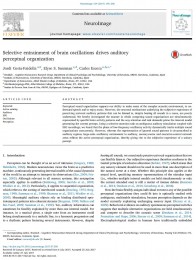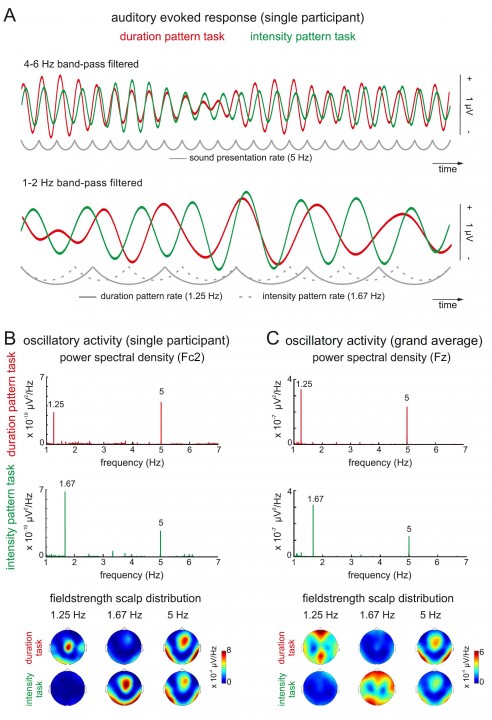
The paper entitled Selective entrainment of brain oscillations drives auditory perceptual organization, co-authored by Jordi Costa-Faidella, Elyse Sussman and Carles Escera has been published online in Neuroimage.
In this study, we address how humans, while facing ambiguous soundscapes perceive unitary multistable organizations. Our results show that brain oscillations concurrently entrain to the rate of all competing sound patterns in the scene. However, whereas entrainment to ignored sound organizations is restricted to auditory regions, entrainment in an auditory-motor network reflects the perceived sound organization.
The full abstract reads as follows:
Perceptual sound organization supports our ability to make sense of the complex acoustic environment, to understand speech and to enjoy music. However, the neuronal mechanisms underlying the subjective experience of perceiving univocal auditory patterns that can be listened to, despite hearing all sounds in a scene, are poorly understood. We hereby investigated the manner in which competing sound organizations are simultaneously represented by specific brain activity patterns and the way attention and task demands prime the internal model generating the current percept. Using a selective attention task on ambiguous auditory stimulation coupled with EEG recordings, we found that the phase of low-frequency oscillatory activity dynamically tracks multiple sound organizations concurrently. However, whereas the representation of ignored sound patterns is circumscribed to auditory regions, large-scale oscillatory entrainment in auditory, sensory-motor and executive-control network areas reflects the active perceptual organization, thereby giving rise to the subjective experience of a unitary percept.
Figure 2 of the paper shows the task dependent neural responses. A) Auditory evoked response to the sound sequence by a representative participant (frontocentral electrode [FCz]) while performing the duration pattern task (DPT; red) and the intensity pattern task (IPT; green). B) Frequency decomposition of the same participant’s neural activity. Note the fine-tuning of neural activity to the rhythms of interest and the specificity of the neural representation of the attended pattern rhythm. Below, topographical scalp distribution of fieldstrength at the rhythms of interest. C) Same as in B), but for the averaged data from all participants (Fz electrode; participant’s data was zero padded when necessary to match the length of the longest data segment). Note the difference in the fieldstrength scalp distribution between the activity at the rate of the attended pattern vs. activity at the rate of stimulation.
Full reference:
Costa-Faidella, J., Sussman, E., & Escera, C. (2017). Selective entrainment of brain oscillations drives auditory perceptual organization. Neuroimage, 159, 195-206. http://dx.doi.org/10.1016/j.neuroimage.2017.07.056.


